
-
 Emegha fires Strasbourg past Lille in Ligue 1
Emegha fires Strasbourg past Lille in Ligue 1
-
Howe takes blame for Newcastle's travel sickness

-
 Pumas maul Wales as Tandy's first game in charge ends in defeat
Pumas maul Wales as Tandy's first game in charge ends in defeat
-
'Predator: Badlands' conquers N. American box office

-
 Liga leaders Real Madrid drop points in Rayo draw
Liga leaders Real Madrid drop points in Rayo draw
-
'Killed on sight': Sudanese fleeing El-Fasher recall ethnic attacks

-
 Forest boost survival bid, Man City set for crucial Liverpool clash
Forest boost survival bid, Man City set for crucial Liverpool clash
-
US air travel could 'slow to a trickle' as shutdown bites: transport secretary
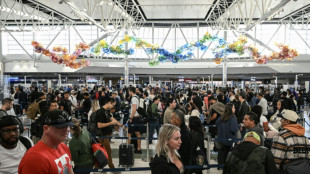
-
 Alcaraz makes winning start to ATP Finals
Alcaraz makes winning start to ATP Finals
-
'I miss breathing': Delhi protesters demand action on pollution

-
 Just-married Rai edges Fleetwood in Abu Dhabi playoff
Just-married Rai edges Fleetwood in Abu Dhabi playoff
-
All aboard! Cruise ships ease Belem's hotel dearth
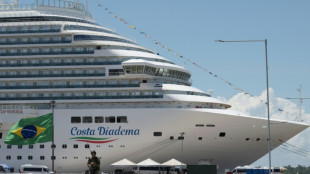
-
 Kolo Muani drops out of France squad with broken jaw
Kolo Muani drops out of France squad with broken jaw
-
Israel receives remains believed to be officer killed in 2014 Gaza war
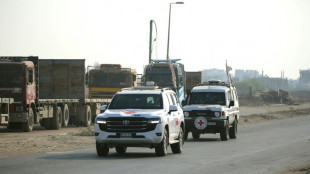
-
 Dominant Bezzecchi wins Portuguese MotoGP
Dominant Bezzecchi wins Portuguese MotoGP
-
Super Typhoon Fung-wong makes landfall in Philippines

-
 Rai edges Fleetwood in Abu Dhabi playoff
Rai edges Fleetwood in Abu Dhabi playoff
-
Scotland sweat on Russell fitness ahead of Argentina clash

-
 Faker's T1 win third back-to-back League of Legends world crown
Faker's T1 win third back-to-back League of Legends world crown
-
Former world champion Tanak calls time on rally career

-
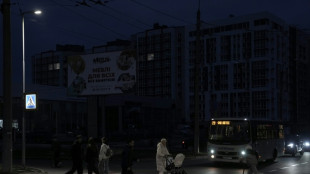 Ukraine scrambles for energy after Russian attacks
Ukraine scrambles for energy after Russian attacks
-
Over 1 million evacuate as deadly Super Typhoon Fung-wong nears Philippines

-
 Erasmus' ingenuity sets South Africa apart from the rest
Erasmus' ingenuity sets South Africa apart from the rest
-
Asaji becomes first Japanese in 49 years to win Singapore Open

-
 Vingegaard says back to his best after Japan win
Vingegaard says back to his best after Japan win
-
Philippines evacuates one million, woman dead as super typhoon nears
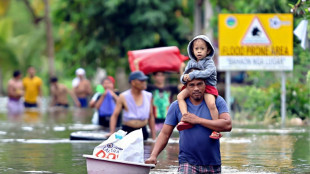
-
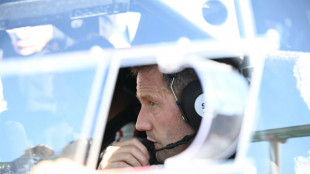 Ogier wins Rally Japan to take world title fight to final race
Ogier wins Rally Japan to take world title fight to final race
-
A decade on, survivors and families still rebuilding after Paris attacks
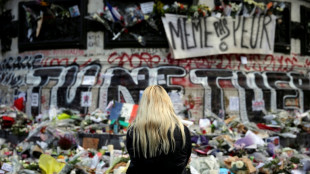
-
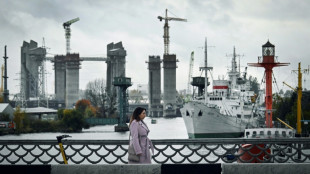 Russia's Kaliningrad puts on brave face as isolation bites
Russia's Kaliningrad puts on brave face as isolation bites
-
Philippines evacuates hundreds of thousands as super typhoon nears
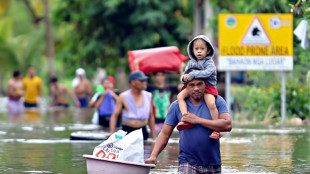
-
 Syrian president arrives in US for landmark visit
Syrian president arrives in US for landmark visit
-
Cyndi Lauper, Outkast, White Stripes among Rock Hall of Fame inductees

-
 Fox shines in season debut as Spurs down Pelicans, Hawks humble Lakers
Fox shines in season debut as Spurs down Pelicans, Hawks humble Lakers
-
New Zealand edge West Indies by nine runs in tense third T20

-
 Messi leads Miami into MLS playoff matchup with Cincinnati
Messi leads Miami into MLS playoff matchup with Cincinnati
-
Ukraine scrambles for energy with power generation at 'zero'
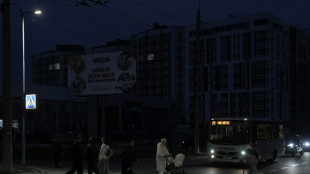
-
 India mega-zoo in spotlight again over animal acquisitions
India mega-zoo in spotlight again over animal acquisitions
-
Messi leads Miami into MLS Cup playoff matchup with Cincinnati

-
 Tornado kills six, injures 750 as it wrecks southern Brazil town
Tornado kills six, injures 750 as it wrecks southern Brazil town
-
Minnesota outlasts Seattle to advance in MLS Cup playoffs

-
 Dental Crowns 101: A Beginner's Guide
Dental Crowns 101: A Beginner's Guide
-
Marseille go top in Ligue 1 as Lens thrash Monaco

-
 Fourteen-man South Africa fight back to beat France
Fourteen-man South Africa fight back to beat France
-
Atletico, Villarreal win to keep pressure on Liga giants

-
 Chelsea down Wolves to ease criticism of Maresca's rotation policy
Chelsea down Wolves to ease criticism of Maresca's rotation policy
-
England's Genge eager to face All Blacks after Fiji win

-
 Wasteful Milan draw at Parma but level with Serie A leaders Napoli
Wasteful Milan draw at Parma but level with Serie A leaders Napoli
-
Fire kills six at Turkish perfume warehouse
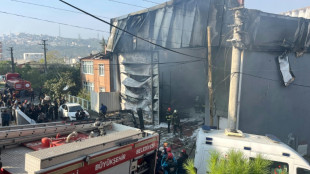
-
 Djokovic pulls out of ATP Finals with shoulder injury
Djokovic pulls out of ATP Finals with shoulder injury
-
Rybakina outguns world No.1 Sabalenka to win WTA Finals


The tsunami detection buoys safeguarding lives in Thailand
Almost 1,000 kilometres off the Thai coast devastated by a tsunami 20 years ago, engineers lower a detection buoy into the waves -- a key link in a warning system intended to ensure no disaster is as deadly again.
On December 26, 2004, a magnitude 9.1 earthquake under the Indian Ocean triggered a huge tsunami with waves up to 30 metres (100 feet) high.
Only a rudimentary warning system was in place at the time, with no way to alert the millions of people living around the Indian Ocean in advance. More than 225,000 people were killed in a dozen countries.
In the years following the disaster, multiple governments developed a global tsunami information system, building on the US National Oceanic and Atmospheric Administration's (NOAA) network of six detection buoys in the Pacific.
Known as Deep-Ocean Assessment and Reporting of Tsunamis (DART), the system now has 74 buoys around the world.
Each floats on the surface while tethered to the seabed, monitoring signals from a seismic sensor on the ocean floor and changes in the water level.
Installed in some of the toughest working environments anywhere on the planet, the battery-powered buoys must be replaced every two years. Only 50 of the devices are currently operational but the network has been designed to provide coverage regardless.
The Thai research vessel M.V. SEAFDEC crew gently lowered a replacement buoy -- a yellow cylinder about two metres in diameter -- this month into the Indian Ocean 965 kilometres (600 miles) offshore.
- Five-minute warning -
The same team also sought to replace a closer buoy in the Andaman Sea, 340 kilometres from the coast, but were unsuccessful and will mount a new mission in the coming weeks.
Shawn Stoeckley, a mechanical engineer from buoy manufacturers Science Applications International Corporation (SAIC), calibrates the system from his laptop on board before it is deployed.
"I feel that it has a lot of purpose, that it can save coastal lives," he told AFP.
The 2004 tsunami killed more than 5,000 people in Thailand, according to official figures, with 3,000 missing.
Now the country's two DART buoys are linked by satellite to a nationwide network of 130 alarm towers equipped with sirens and loudspeakers that can broadcast in five languages in coastal provinces.
Residents in disaster-prone areas also receive an SMS alert of an imminent tsunami, warning them to evacuate quickly.
Before 2004, it would take anywhere from 15 to 50 minutes before an alarm could be issued, says Laura Kong, director of UNESCO's International Tsunami Information Center.
"Today it's typical we would get something within five to seven minutes," she said.
One day, say UN experts, the system will prove essential.
There is a "100 percent chance" of another tsunami on the scale of 2004 at some point, Bernardo Aliaga, UNESCO's head of Tsunami Resilience Section, told an anniversary conference, adding it "could be tomorrow or in 50 years or 100 years".
- False alarms -
Mobile phones have become ubiquitous and disaster apps widely available in the years since the tsunami, but locals say the towers are still vital.
Songsil Nodharith, 51, head of Khuek Khak village, helped residents to evacuate "without even grabbing their belongings" during a night-time false alarm last year and urged authorities to ensure that the towers were well maintained.
In Sri Lanka -- where 31,000 were killed in 2004, making it the second-worst-hit country -- more than three-quarters of the 77 tsunami warning towers the government subsequently installed are not operating because the communications equipment has become obsolete, the island's Disaster Management Centre chief Udaya Herath told AFP.
Mobile phone companies have instead identified some 70,000 "key contacts" in coastal areas, including resort managers, to receive warnings and evacuation orders in the event of impending danger.
Warnings have occasionally set off panic in Thailand, with locals and tourists rushing for higher ground, but residents have faith in the system.
The fishing village of Ban Nam Khem saw Thailand's worst destruction in 2004, with trawlers swept onto houses and 800 residents killed.
Manasak Yuankaew, 48, now head of the village, lost four members of his family that day.
"We have a saying here," he told AFP. "Fleeing 100 times is better than not fleeing that one crucial time."
A.Malone--AMWN
